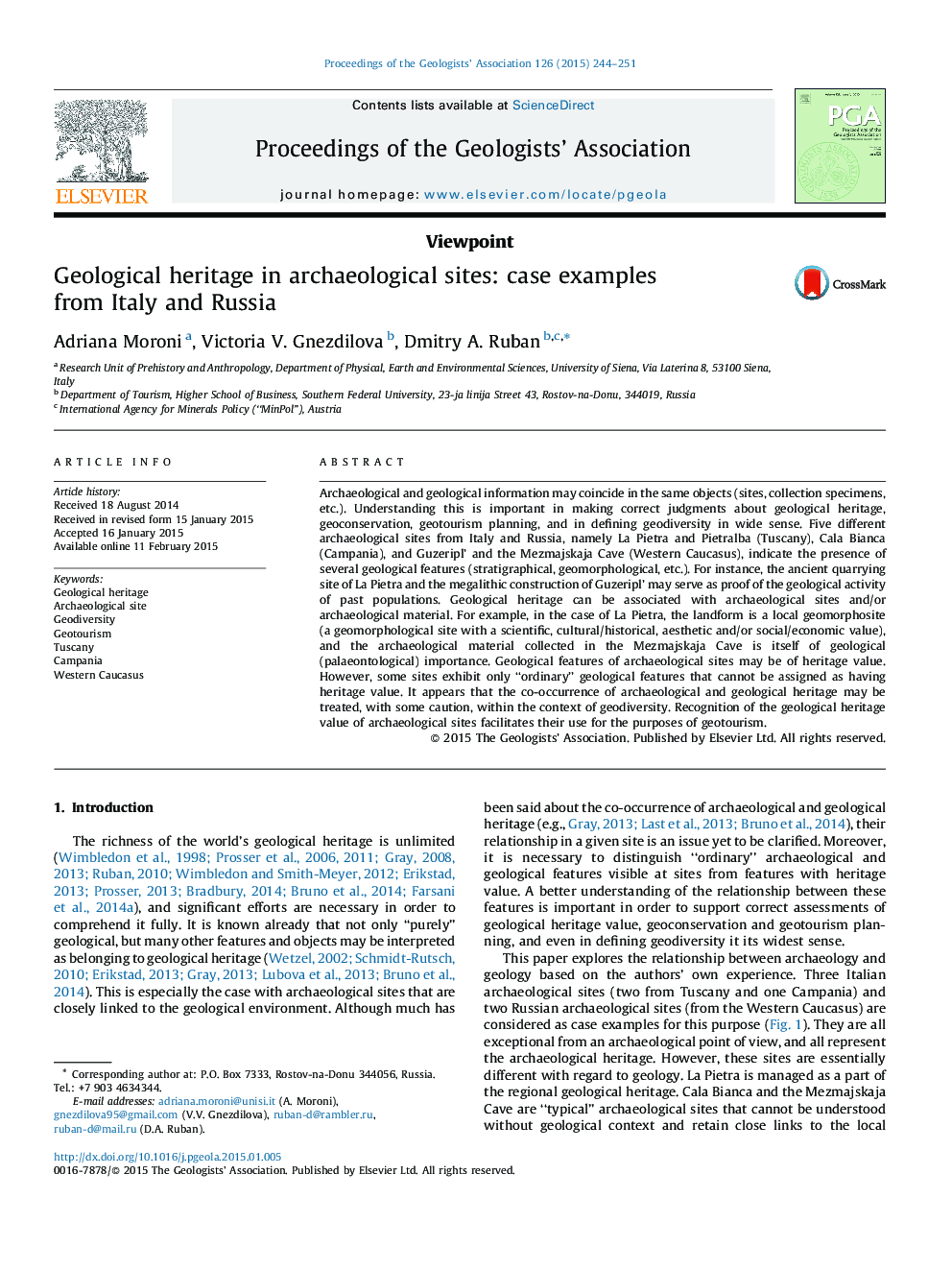| Article ID | Journal | Published Year | Pages | File Type |
|---|---|---|---|---|
| 4735055 | Proceedings of the Geologists' Association | 2015 | 8 Pages |
Archaeological and geological information may coincide in the same objects (sites, collection specimens, etc.). Understanding this is important in making correct judgments about geological heritage, geoconservation, geotourism planning, and in defining geodiversity in wide sense. Five different archaeological sites from Italy and Russia, namely La Pietra and Pietralba (Tuscany), Cala Bianca (Campania), and Guzeripl’ and the Mezmajskaja Cave (Western Caucasus), indicate the presence of several geological features (stratigraphical, geomorphological, etc.). For instance, the ancient quarrying site of La Pietra and the megalithic construction of Guzeripl’ may serve as proof of the geological activity of past populations. Geological heritage can be associated with archaeological sites and/or archaeological material. For example, in the case of La Pietra, the landform is a local geomorphosite (a geomorphological site with a scientific, cultural/historical, aesthetic and/or social/economic value), and the archaeological material collected in the Mezmajskaja Cave is itself of geological (palaeontological) importance. Geological features of archaeological sites may be of heritage value. However, some sites exhibit only “ordinary” geological features that cannot be assigned as having heritage value. It appears that the co-occurrence of archaeological and geological heritage may be treated, with some caution, within the context of geodiversity. Recognition of the geological heritage value of archaeological sites facilitates their use for the purposes of geotourism.
